#henry is the son of james bond indeed
Explore tagged Tumblr posts
Text
Sorry Alex but the Prince gets what the Prince wants. 👀🔥❤️🤍💙





“You’re gonna come to my room on the second floor of the residence where I’m going to do some very bad things to you.”
#oh yeah? you dare to close the door on my bloody nose?#the fuck you will get rid of me!#henry is the son of james bond indeed#THAT LOOK WHEN ALEX OPENS THE DOOR? EXCUSE ME?#and then Henry thinking#alex baby you can't mess with royals like that#much less with a power bottom gay prince who was craving for having you alone for years!#red white and royal blue#red white & royal blue#rwarb#rwrb#rwrb movie#FirstPrince#alex claremont diaz#henry fox mountchristen windsor
1K notes
·
View notes
Text
RWRB thoughts
My thoughts after 1.5 viewings (yes, 1.5. I have watched it once and then re-watched certain scenes, but haven't made my way through a full re-watch yet.)
What I loved/like/squealed about:
nervous Alex at the wedding
Nora being all speechless when led away by Bea
The whole cake incident - it did not happened as I was expecting (don't ask me what I was expecting, I have no earthly idea), but I loved the whole thing
Zahra hitting Alex with the pillow. Perfect character moment
the silly height arguments that pop up several times. I think these are extra fun for book readers as it acknowledges the difference between the book and the actors in the movie but keeps the general teasing about height in the movie
Actually, Zahra in general was just so perfectly done
Amy being badass and also a loving dog mom (that wink at the hospital? the 'do I need to clear the room'? Amy is the best)
I still don't know what an equerry is. But I'll take a Shaan any day
The closet scene was really well done. It really allowed for the development of the rest of their relationship.
The way they did the texts with the voice overs and then Henry appearing in Alex's bed - I may have swooned a bit
The New Years party looked like what I imagine a cool party would look like (people do not invite me to cool parties and they never will).
All the representation in the film. Female black PM of the UK? Check! Gender fluid party attendees? Check? Some girl on girl flirting? Check! Trans actor? Check!
Percy's pink hair
Nora's red outfit. Damn girl.
Henry's reaction when Alex grabs his hips at the New Year's party - absolute gold
All of Henry's pining during the New Year's party was just perfectly painfully wonderful
The 'woah' of the woman who walks in when Nora and Alex are talking about his hook ups with men
Alex being totally distracted by Henry arriving at the dinner and looking every inch the son of James Bond that he is
That kiss in the red room was... hmmm... quite.... intense
Also Henry pointing at books after they were interrupted n the red room might have been the most ridiculously funny moment of the whole movie for me
Commanding Henry in the bedroom
Shots of Henry's ass bouncing on a horse being played between shots of the tack room rendevous. I think we all understand why Alex was so, motivated shall we say
The tenderness and intimacy of that Paris scene. Love making indeed.
Henry singing karaoke. Nora bopping along like all of us would like to be doing as fans no doubt
The Casey McQuinston book cameo!
Henry trying to make his burdens clear to Alex but Alex not getting it until they have their blow out. Also drenched Alex in this scene with Henry in his fancy housecoat was very visually appealing
The V&A scene made me cry. Henry talking about the only place he can find peace and have dreams of a happy life he doesn't think he'll ever have. Alex playing the song right away and making his dreams come true. Tears. Happy Tears.
The EXCHANGE! the signet ring. the house key. just kill me now
Seeing Henry's reaction to the email leak and how desperate he was to talk to Alex, how terrified he was, how betrayed. Hats off to Nicholas Galitzine for his acting (for the whole movie, but that scene in particular was just excellent)
Shaan and Zahra reveal! Yes!
Alex'a speech. Amazing.
Baby.
Stephen Fry as the king. What a choice. If you don't know how ironic this is, well go use your goggle skills.
Henry sticking up for himself. The tears in his eyes when he sees the public support
The way they show Alex's passion for politics and helping people.
The way they show Henry's passion for literature, history, etc. And also his frustration at not being able to make an impact and help people they way he wants to and how much he admires Alex for what he is doing
Things I missed/didn't love:
Alex not being a child of divorce. Also how his parent's relationship seemed ambiguous for a long time in the movie (for me anyway. Maybe I was just hoping they weren't together? like in the book?)
Not enough moments of Nora being a stats geek. She said she analyzed data but we don't get a moment where she gives Alex the odds. Sad.
Alex not having his sexual realization. I can see how this trims things down for the film, but I missed it
Not using the Miguel character as well as they could have. Again I can see this being trimmed out for time. I thought this was a reasonable replacement for the Luna subplot. Would have liked more in terms of fall out - did he have insider knowledge? Did he help get the emails leaked?
I would have loved more time of the texts to build the foundation of their relationship
I would have loved even more to have had more email time. I know this is tricky to get on film, but I really missed the sheer romance and intimacy we get in from the emails in the book. It makes the leak so much more impactful
I wanted more David. I love dogs people. I needed more beagle content!
Not enough Pez! Also why was he not Pez? Percy? Percy who? I loved when we saw him and I wanted more.
Same can be said for Nora
Did this film get an R rating from, maybe 2 'fuck's and one gay sex scene where no dicks or asses were shown? (Yes, one ass was shown, but it a completely different scene) Is that all it takes? Boo to the rating people. BOOOOOO.
The transition from the fight between Henry and Alex in his apartments to them leaving from to the V&A didn't feel quite right to me. It was awkward. Each scene itself was wonderful, just one right after the other felt like something was missing.
I honestly, completely, wholeheartedly loved this film. I know I will be watching it over and over. It will have a permanent place in my comfort film rotation. I think all the actors in the film did an amazing job. Both Nicholas and Taylor bought a lot of depth to their roles and really brought them to life so, so well. Their chemistry was completely believable and I rooted for them every step of the way.
For me, the book will remain my main source material for these characters and this story. But this film is such a great complement to the book. A different, but parallel story. I agree with director Matthew Lopez saying this was a work of fanfiction in its own right. It is not the same, but the heart and soul of the book and the two main characters is all there. Not sure I could have asked for much more.
(except for any missing scenes/extended scenes. i'm asking for those. please)
20 notes
·
View notes
Photo
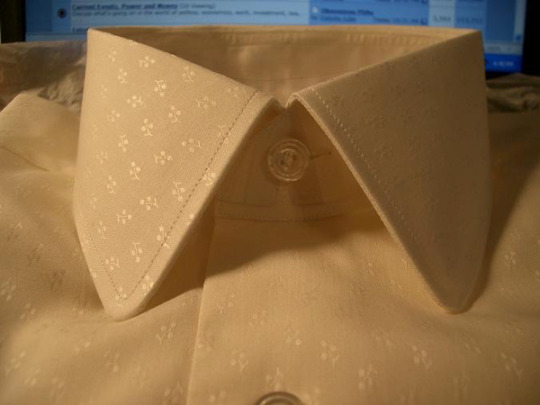
THE LEAST OF ALL CASUALTIES
by Réginald-Jérôme de Mans
I’m thinking, for some reason, of the late Adnan Khashoggi and of a host of dead playboys and nabobs, shrouded in the finest custom shirts money, so much money, could buy. Adnan Khashoggi, who so clearly wanted to be the Basil Zaharoff of the late twentieth century, an international man of mystery dealing arms and other items from the shadows, a figure of luxury legend, a man with whom I have nothing in common, save that life occasionally humbles us…
Yes, Khashoggi, who nicknamed his Korean bodyguard “Mr. Kill,” who reportedly kept $100,000 cash handy in an attaché case on board his private jet to sweeten any deal or grease any palm, who ordered the largest yacht in the world (Queen wrote a song about it! It was the villain’s yacht in a Bond film!), came undone. Iran Contra, Imelda Marcos, BCCI, a host of 1980s names of tarnished glitz like the hidden grime in a Helmsley hotel… He had to sell the yacht; Donald Trump briefly owned it before Trump’s own financial problems forced him to sell it yet again, to a Saudi prince.
Adnan Khashoggi, yes, that Khashoggi, uncle of the intrepid journalist Jamal Khashoggi, assassinated in sordid circumstances a year after Adnan died in wealth but not splendor. Assassinated and unavenged.
I am even less Adnan’s spiritual heir than that serious, dedicated nephew. It’s a strange contrast between the thoughtful engagement of one and the freewheeling, flamboyant capitalism of the other, a flamboyance of fairy tales, fairy tales because at their best they make us momentarily forget their foundations of exploitation and graft.
Like robber baron James Goldsmith (who inspired Terence Stamp’s character in Wall Street), Khashoggi was a famous customer of the bespoke services at Lanvin, the oldest couturier in Paris and for a long time the best shirtmaker there. Stories filter out, unattributed in magazines or relayed by friends in the know, stories that made him the last of the nabobs. He ordered a thousand custom shirts at a time! The workrooms (until a few years ago on-site on the Faubourg Saint-Honoré, some of the most expensive real-estate in the world!) were busy for months! Because he only wore his Lanvin custom shirts once! What a way to save on laundry bills!
What happened to them? Did he hand them down to his sons, or to Jamal? Like the King of Morocco with his Smalto custom suits, once worn did he pass them on to his staff?
Those days of excess are gone. They were long gone when I pushed the door at Lanvin, curious to try what knowledgeable friends had called the best shirtmaker. The shirtmaker and his staff must have known that, as clients go, I could not be at a farther remove from that man and those days, a gloomy wallflower anxious to make sure that my centimes counted, that what I received would last, gratefully accepting their suggestion to provide extra cloth to remake the collar and cuffs of the one shirt I initially ordered, for whenever those would wear out. For I was interested just in a single shirt from that maker, not thousands to strew in the wake of conspicuous consumption. No matter. They treated me as politely and patiently as they would their most extravagant client, and produced a shirt that fitted closely, marvelously, with handmade buttonholes that a much more famous shirtmaker exclaimed were worthy of a museum. In other words, a gem as precious as the daydreams I had burnished.
I was to be only a sporadic client, sometimes ordering only after an absence of years, surprised at how well they remembered my tastes, at how well my patternmaker carried out the refinements I wanted, indeed at how, over years, we nurtured a polite friendship over shared snark and tastes in old movies and Art Deco.
Art Deco. Lanvin’s Paris men’s shop is an entire building, opened in 1926 dedicated only to custom tailoring and shirtmaking. Prior to that it had been the headquarters of Lanvin Décor, designed with the unmistakable flourishes of Armand-Albert Rateau. A gorgeous luxury. For decades, Lanvin Tailleur et Chemisier retained Rateau’s stylized gilt découpé designs and furniture, before renovation banished those motifs only to tie patterns and other accessories. It wasn’t until the 1970s that Lanvin offered any men’s ready-to-wear. While it had embraced worldwide licenses for garments bearing the Lanvin name by the 1980s (my father has a poly-cotton Lanvin dress shirt from that period), its flagship was one of the only places in the world where – decades before Berluti made this boast – a man could be outfitted in bespoke literally from head to toe, Assiduous hands at the Lanvin-owned hatter Gélot (magically transposed from the Place Vendôme to a shop-in-shop on the Lanvin bespoke floor) still crafted and fit the finest headwear, while one of the Corthay brothers themselves created Lanvin custom shoes. As for Lanvin custom tailoring? In 1901, Jeanne Lanvin herself had designed Lanvin very first men’s garment, her friend Edmond Rostand’s elaborately embroidered uniform for his initiation into the Académie Française, the first of over 70 such custom-made uniforms Lanvin would make, along with every sort of conventional tailored garment – including suits and sportcoats for certain French politicians who could not patronize their British tailors while in office.
Those days are gone. In the ’60s Lanvin had advertised its bespoke with elegant cartoons of well-appointed gentlemen’s clubs, yacht marinas, luxury hotel suites and trophy-bedecked hunting lodges, all captioned “For a certain class of men.” Those men are mostly gone. So, too, are their replacements, the rootless international men of mystery like Khashoggi. Even intellectual poseurs (yes, I’ll grant him the “u”) like Bernard-Henri Levy stopped ordering their casually unbuttoned white shirts from Lanvin. Middle-class punters like myself, in love with the ritual of cloth selection, of fitting, of being escorted to the bespoke floor with its own little escalator, the month-long wait pregnant with anticipation for an elaborately-packaged single shirt, are too few. No more sprawling bespoke floor but a small if tasteful salon, with what remained of the ateliers on the same floor, behind a discreet door. The hidden of the hidden: at a time brands all over heavily advertised their custom services (however spurious), not a single vitrine at 15, faubourg Saint-Honoré carried the least hint that one of the finest tailors and shirtmakers in Paris resided there. Resided, for they did not travel – unless a customer flew themout. Even the shop Lanvin opened on Savile Row a few years ago didn’t bring them over, instead offering a sort of customized stock special service on its ready-to-wear designs.
This is the least of all casualties, to lament the end of something that only the most entitled of us could ever use. For even if I’ll never set foot on a yacht, I recognize how privileged I was to indulge in the affectation of a custom shirtmaker, of the fetish of its product. Of the last days of this particular legend. Ninety-five years after its founding, the custom tailor and shirtmaker defected to another life, and Lanvin bespoke is now dead. Ninety-five years! They could not put up with five more years in the shadowy recesses of their employer, a small, ever-shrinking habitat, where I hoped their remaining an afterthought would shelter them from corporate extinction, and round out a century.
The least of all casualties, for what ended is just an idea, the idea of a permanence, a waning best, a classic. For those who want the concrete, various lines of ready-to-wear remain. Lanvin was one of the classic old guard of tailors that the legendary Groupe des Cinq, including Camps, rebelled against in the 1950s. Today, whether rebel or classicist, what is left of bespoke rallies together – tailors from the supposed old guard migrate to those former iconoclast hellions, and vice versa.
The least of all casualties, like an arms dealer dying, finally, in a Harley Street clinic. No reason to weep for him, when we live among the casualties he and his colleagues may have wrought, his financial heirs likely preferring fleece vests, athleisure, performative populism. What the rest of us inherit is casualty, this daydream’s passing worthy of no more than a moment’s thoughtful pause in our current nightmares. At least allow it that.
17 notes
·
View notes
Photo

~Henry VII: More Myth than Man - The Red Dragon's Odyssey~
“He was comely personage, a little above just stature, well and straight-limbed, but slender. His countenance was revered, and a little like a churchman, and as it was not strange or dark so neither was it winning or pleasing, but as the face of one well disposed. But it was to the disadvantage of the painter, for it was best when he spoke.” (Francis Bacon) Although written a century after his death, Francis Bacon’s description of the first Tudor King, is right on the spot. Linda Porter for her part, says the following in her book "Tudors vs Stewarts": “[He was] A considered person, not given to great public displays of emotion, somewhat ascetic in appearance, not exactly handsome but with an interesting and by no means unattractive face, the whole man only at his most appealing when he was animated. His portraits show that he did, indeed, have something of the churchman about him: a calm and also inscrutability, a sense that you would never entirely know that he was thinking. It gave him an air of authority.” Henry was formerly the Earl of Richmond, a title he inherited before his birth from his late father, Edmund Tudor, half-brother to the last Lancastrian King, Henry VI. Henry was named after his half-uncle and after he and his direct family died, he went into exile where he spent thirteen years as an 'honored guest' of the Duke of Brittany, Francis II, before spending his fourteenth year in France. The French King and his influential sister, Anne of Brittany, gave Henry funds and men for his campaign against the "usurper", King Richard III. After the Battle of Bosworth, he became King of England. According to one legend, one of his men found the crown lying in a thornbush near the slain Richard III. Some early Tudor motifs depict this, making this legend a popular truth in the minds of his future subjects who grew up knowing nothing else but the version of events that Henry and his descendants gave them. Archaeological evidence puts to the test some of the claims made by both parties. In his book "Bosworth", Michale Jones, says that most of what the Tudor chroniclers wrote must not be taken at face value since they were written after the outcome of the battle, nonetheless, he does give credence to some contemporary accounts as they corroborate medieval attitudes. Henry was 28 when he was crowned King of England and Lord of Ireland. Three years older than his granddaughter and last monarch of his dynasty, Elizabeth I, and like her and his other granddaughter, he had already experienced a lot. Aside from his exile, he had escaped assassination and kidnapping attempts from his late father-in-law, Edward IV. At a young age, he learned to trust no one and rely on his wits and those closest to him and blood. He was well-aware of the fact that without his uncle Jasper and mother, he would have never made it this far. He showed his gratitude by giving them titles, lands and positions that made them two of the richest and most influential peers in England. While his wife was not a political figure like many of her predecessors, she remained a constant figure in his life. He and Elizabeth loved and respected one another and as they swore to do on their wedding day, they were there for each other in sickness and in health. When they lost their firstborn and eldest son, Prince Arthur, Elizabeth of York was the first one to comfort Henry, reminding him of their duty and their youth -that they still had more years ahead of them and could still give the House of Tudor one more heir- and afterwards, Henry did the same for her. Henry showed a deep appreciation for the land of his birth, Wales, rewarding all of his Welsh commanders and creating new posts for some of them, as well as using the symbol of their flag as part of his royal coat of arms. To this day, the red dragon that represents Cadwalldr and in the Tudor years, came to be associated with the new dynasty, is still the symbol of Wales. To avoid another recession or economic collapse, Henry continued (albeit improving them) Edward IV's economic policies. Today we often hear about social scientists stressing on employers to make sure that they are in a good place (mentally), otherwise, their decisions could affect the well-being of their employees as well as themselves. This could not be truer for Henry VII. While his successes are commendable; sadly, they are overshadowed by the last years of his reign. Thomas Penn heavily focuses on these last years in his book "The Winter King" and in his documentary of the same name. He lists how Henry became more paranoid and closeted himself from the outside world, coming out only for special occasions. This was due to his personal losses. By 1503, he had lost his uncle, eldest son, wife and baby daughter and was soon to lose his eldest and favorite daughter, Margaret. Named after his mother -whose counsel he still valued-, Henry was close to his eldest daughter but like every royal father, he was well aware that if he wanted the peace between England and Scotland to remain (something that few other English kings achieved) he had to do this small sacrifice. Princess Margaret knew what her duty was and was ready to fulfill her royal obligations. In mid 1503, a few months after her mother died, Margaret left England. Months later she arrived to Scotland where she married King James IV, becoming Queen Consort of Scotland. Although Henry never saw his daughter again, the two remained close. Distance could not sever their bond anymore than Henry's lament for his dead ones could. The two continued to write to each other until Henry's dying breath in 1509, six years later. This affectionate persona is often dismissed by writers, because it detracts readers from focusing on the negative aspects they present them with to prove their case that Henry was a tyrant, or, that if he didn't start as one, he surely became one. But was he a tyrant? What is the truth behind the fiction? Towards the end of his life, Henry did become paranoid and he did enact policies that bled his country dry; but as it's been pointed out, this was due to the effect his personal losses had on him as well as the threats that still lingered abroad. Though he had rid himself of most Yorkists, including their puppets; there were still some out there whom he feared would be used against him in the same manner as he had been used against Richard III. And unlike his predecessors, including the king he deposed, Henry's claim was tenuous and his successes weren't enough to convince anyone of the validity of his claim, or the legitimacy of his offspring who were the embodiment of York and Lancaster. This made Henry uneasy and with only one male heir and no spare, Henry became increasingly cautious, seeing enemies everywhere. He was determined to safeguard what remained of his family and protect his only remaining son. By the time he died, the crown was wealthier than it had been in decades. His son, also named Henry, ascended to the throne as a seventeen year old and was crowned months later when he became eighteen. Henry VIII honored his father's legacy, reminding everyone of his father's victory, his parents' union, and the product of the union: Himself, as the living embodiment of their dream. The perfect union of Lancaster and York from which sprung a new hope who'd brought to England a golden age. And while some did dispute this, most were wise not to say a word unless they wanted to risk their heads at the chopping block or be accused as heretics by His Majesty's inquisitors. But, concerned with his own legacy, Henry VIII also delivered some clever jabs at his father. In the famous Tudor Dynasty portrait, both Henrys lean next to a pillar with their respective wives -Jane Seymour and Elizabeth of York- at the opposite side, that reads that while Henry VII was amazing, his son was more amazing because he separated from the church -thus freeing England from its shackles that bound it to Rome- and made himself pope, making the authority of a monarch absolute which was more than his father could have ever dreamed of. Henry VIII was certainly important and by many people's standards, a legend, but so was his father. His father should have never been King of England and yet he became one. Without him, there would have been no Tudors or strong king who would've gotten away with breaking away from Rome and making himself Head of his new Church.* To loosely quote Chris Skidmore from his book "Bosworth", the odds were stacked against him and he still kept advancing until he reached his ultimate goal and exceeded everyone's expectations. The end result was a mixture of luck, good timing, bad weather, indecision and bad choices on the part of his enemy. On the 30th of October 1485, Henry Tudor was crowned King of England. Months later he married the beautiful Elizabeth of the House of York whom he had re-legitimized by legitimizing her parents' union that Richard III through parliament had declared unlawful. While his last name died off with his granddaughter, his dream of seeing his dynasty overshadow all others came true. Controversy, success, among all other things, are what continue to make the Tudors one of the most interesting figures in history. *It was Henry VII's actions to eliminate private liveries that allowed for this. Henry had seen how easy it was for nobles to assemble an army. The Plantagents tried to do this but had little success. They had to keep their nobles content in order to avoid revolt, while others who were less eager to play the role of gracious hosts to them had to keep constant vigilance by placing spies on their households. Henry VII also increased the number of spies and required more tests of loyalty from his noble subjects which his successors, including his grandchildren, imitated, to ensure that no noble would ever overthrow them. This is one of the many reasons why ALL the Tudor Kings and Queen died in their beds instead of the battlefield or poisoned. Sources: Tudor vs Stewarts by Linda Porter Tudor by Leanda de Lisle Wars of the Roses: The Fall of Plantagenets and Rise the Tudors by Dan Jones Bosworth by Chris Skidmore Bosworth 1485 Michael K. Jones Henry VII by SB Chrimes Tudor Treasury by Elizabeth Norton Winter King by Thomas Penn Elizabeth of York by Amy Licence
1 note
·
View note
Link
“I’m a meat and two veg kinda fella,” says Kenneth Branagh. “I love my fish and chips, and my English breakfast, and I like my football and horse racing – my dad loved the horses.” His tastes, he admits, such as his signature dessert recipe for melted Mars bar over vanilla ice cream, were formed in his working-class childhood.
For the past four decades, this son of a joiner from Belfast has been living cheek by jowl with that other great scion of the lower classes – William Shakespeare. Ever since Branagh became a stage and film star playing Henry V in the Eighties, he’s been directing Shakespeare’s works, adapting them, playing many of his great characters. Now, at 58, he is assuming the bald pate, sharp nose and very pointed beard of the playwright himself, in the self-directed All Is True.
It’s an unexpectedly moving portrait. Branagh’s Will is entering his 50s, and retiring from London to Stratford-upon-Avon, where he had long owned a house, and where at 18, he had married Anne Hathaway, a 26-year-old already pregnant with their child. It’s 1613, the Globe Theatre has burned down, and the playwright is still grieving the death of his only son, Hamnet, many years earlier.
“For me, it was a sort of time travel,” says Branagh, whose enduring boyishness hides the fact that he is eight years older than the Shakespeare we meet in the film. (The playwright died in 1616, at the age of 52.) Branagh’s Shakespeare is stiff of bearing; Branagh isn’t. He’s playful while having his photograph taken in the London hotel where we meet, and his comfortable clothes – knitwear – mirror a softness in his tone and manner. It masks a seriousness that shows itself often when he speaks.
After all these years exploring Shakespeare’s work, does the think he has a feel for the man? “I have a sense of preoccupations that repeat themselves,” he says. “They came together when I played Leontes in The Winter’s Tale a couple of years ago, because it did feel like a play from a man at the end of his professional life, maybe in the evening of his life – there was such a longing in it for this lost child, such an ache for the reunification of a family, that it seemed to add up with all sorts of longings in the plays, even in the comedies.”
The grief for Hamnet in All Is True is so acute that, set against the way Will yearns for a male heir, and his complicated relationship with his daughters, Susanna and Judith (Hamnet’s twin), it makes you wonder whether Branagh has been contemplating his own mortality. Does he wish that he had had children?
“Didn’t happen,” he shrugs. “It doesn’t seem to me to be valuable to be wishing and hoping for things that don’t appear to have been on your dance card. I go with what we have. I start with, are you healthy, do you have some family, do you have some friends? Anything north of that’s terrific.”
Since 2003, Branagh has been married to art director Lindsay Brunnock. Before that, of course, he was married to Emma Thompson – a celebrity coupling that was so ubiquitous between 1989 and 1994 that they were referred to simply as “Ken and Em”. They acted in a series of Branagh’s films together, such as the history-repeats-itself thriller Dead Again (1991), the rather precious paean to privilege, Peter’s Friends (1992), and a very winning Much Ado About Nothing (1993), before the partnership ended with Branagh’s affair with Helena Bonham Carter. Does he think he and Thompson will ever work together again? “I don’t know,” he says. Would he like to? “She’s a terrific talent, so who knows?”
Branagh is clearly not keen to talk about his personal life, however much of it is already in the public arena. Yet so little is known of Shakespeare’s life that All Is True must make a series of guesses to fill the void. (The script is written by Ben Elton, who has already treated the subject as comedy in Upstart Crow.) But the element most likely to raise eyebrows is the casting of Judi Dench as Hathaway. Dench is 84. It’s very unusual to cast a woman 26 years older than her leading man, isn’t it? “Is she 26 years [older]?” says Branagh, surprised. “Really?” I nod – does he think audiences will balk at that?
“I don’t think so. I was aware that for the past 100 years of cinema that age gap has usually been the other way round. If it felt it was going to kill the story, I would have been terrified; for some maybe it will, but for me, not at all. She’s unique and to have that chance with one of the greatest living actors, the age thing didn’t come into it.”
Is it an example of “age-blind casting”? “Yeah, I guess so. She was the right person for the role.” The film seems to suggest that Hathaway and Shakespeare reunite sexually, too. I wonder if, as a director, he considered having a physical scene between them? “No, it didn’t seem appropriate for this. I wouldn’t have balked at it if it had seemed right, very much not.”
He also shares a seven-minute scene with Ian McKellen, who plays the Earl of Southampton, to whom Shakespeare famously dedicated two poems. It evolves into a duel between heavyweight Shakespeareans when both recite Sonnet 29 (“When, in disgrace with fortune and men’s eyes”). “I practised for that scene as I’ve never practised before,” Branagh admits, explaining that he went to see McKellen perform as Lear last year, and rehearsed with him backstage. “I found that pretty intimidating… You’ve got to be up pretty early in the morning to keep up with Dench, but with him…”
It’s one of the pivotal moments of the film, which clearly suggests that the Bard was in love with a man. Is that an unavoidable conclusion from the Sonnets, four-fifths of which are addressed to a “fair youth”? “I think it’s certainly unavoidable not to consider it very strongly,” Branagh says. Is there room for doubt that Shakespeare preferred men? He laughs. He’s weighing his words carefully. “I think it’s a strong possibility.”
Branagh does this a lot, studiedly avoiding sound-bites. Asked if he believes Shakespeare was indeed the author of the plays, he decides: “The other theories are brilliant speculations, but there has been no winning piece of evidence. In the current state of knowledge, I would follow the man from Stratford.”
Branagh’s family moved from Belfast to Reading to escape the Troubles when he was nine. As a boy from the sticks, who arrived at Rada in the late Seventies, then went on to act, direct and try his hand as a playwright, had he wanted to actually be Shakespeare?
It’s impossible to imagine it, he says. He just felt “so at home and happy telling stories in the theatre to a live audience, the itinerant nature of it. Those that were ahead of me – whether it was Shakespeare or actors of the past or directors – I was inspired by them.”
Branagh’s career began in a blaze of glory. But while his stage reputation continued to grow, in film at least there was a mid-period lull. His Mary Shelley’s Frankenstein (1995) was panned; his run of big-screen Shakespeare adaptations stuttered with the widely derided song-and-dance version of Love’s Labour’s Lost (2000), and even when he returned with a striking As You Like It (2006) set in 19th-century Japan, around the same time as The Magic Flute (2006) and Sleuth (2007), all three “received a pretty rough time”, he says. Yet he’s sanguine about criticism. “Sometimes people don’t like ’em. It’s as simple as that. I put the same feeling into all of them.”
He has always had a phenomenal approach to work that seems to border on mania. Since he was 29, he has been using meditation to ensure that he doesn’t yo-yo between frantic activity – “I wouldn’t characterise it as manic, but I would say, yes, extremely hectic at times” – and its corresponding depressive state.
“I knew I had to work quite hard at all those things that would try to allow you some peace amid the noise and haste. I like to read about spiritual matters and I’ve developed the meditation since then to try to find the way to turn down the noise. When the engine’s revving really high, I think you have to be careful.”
A decade ago, Branagh made the decision to leave the West End production of Hamlet he had been about to direct, starring Jude Law, to take up the reins of Thor (2011) for Marvel. It was a change of direction that opened the door to a new phase in his career, as a director of blockbuster movies. He won’t accept the charge that comic-book films have killed grown-up cinema – “Well I’ve just made a grown-up film, I’d say” – and mounts a strong defence.
“In the best hands you get stories that involve spectacle and, in some cases, depth or wit or creative imagination that allows for a really cinematic experience, they provide stories that make you want to go to the pictures. They ain’t killing grown-up movies.”
His hit 2015 Cinderella, starring Lily James and Richard Madden, will be followed this summer by a lavish Disney adaptation of Artemis Fowl, Eoin Colfer’s 2001 novel about a boy genius who discovers the fairy world beneath our feet. Blockbusters bring their own set of pressures. Does he fear that if Artemis Fowl bombs, that avenue closes? “No, it doesn’t feel that way, although perhaps it is that way,” Branagh says. “I think if it felt like that it would be quite hard to do the work, but I’ve certainly been in situations where if a movie doesn’t work you’re really aware of the cold winds that blow around you for a while. It’s a commercial business and these are big investments.”
What would he do if an invitation to take on the Bond franchise came his way? “I have absolutely no idea,” he says. “I have Artemis Fowl to finish and I hope we get to make Death on the Nile [the second of his Agatha Christie adaptations, after Murder on the Orient Express, in which he stars as Poirot] towards the end of the year. Ask me the Bond question a picture or so from now.” He leans back.
“I should be so lucky.”
There will be a preview screening of 'All is True' followed by a Q&A with Kenneth Branagh at VUE cinema in Leicester Square on Wednesday 6th February, from 6.30pm.
Tickets are £20 for non-subscribers and £10 for subscribers.
12 notes
·
View notes
Text
OUAT 2X03 - Lady of the Lake
Did you think it was safe to go back in the water?
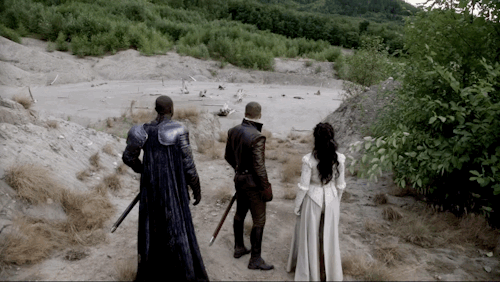
Well, you’re half right!
While there’s not a lake, you CAN go below the fathom of the cut to see my thoughts on this episode, and that’s cool too!
Press Release Emma and Mary Margaret, with the aid of Mulan, Aurora and brave knight Lancelot, attempt to find a portal that will bring them back to Storybrooke. But a dark force threatens their safe return. And Henry tries to talk Jefferson into reuniting with his daughter. Meanwhile, back in the fairytale land that was, on the eve of meeting Prince Charming’s mother, King George poisons Snow White, and the only antidote lies within the waters of the Lady of the Lake. General Thoughts - Characters/Stories/Themes and Their Effectiveness Past So this is another case of the segment being all well and good, but not leaving me with a lot to say. I think the story worked pretty effectively, the characters were pretty consistent, and it was an enjoyable and emotional story to take in. I actually got choked up as Ruth was dying.
I did have an interesting character point to make about King George: ”I had a son I loved die before his time.” Now, when you take “A Murder Most Foul’s” flashback into consideration, should one consider George’s love for James as being love to the best of his understanding, albeit more problematic (Along the lines of Cora for Regina or a certain Infinity War spoiler) or as a fake love that’s just for show? His next line about wanting to “replace” James and the fact that he cried at James’ funeral makes me think of the former. Enchanted Forest I’ll never get over how disturbing Cora is when she pretends to be friendly. Normally, with characters like Umbridge, the creepiness of a false friend character comes from how sickly sweet they are, but that’s absolutely not the case with Cora. She plays her roles so naturally that if she were any other character, I feel like I’d believe her at first sight. There’s a warmth in her voice and a gentleness to her being, and that holds over to when she’s “Coralot” too.
Emma and Snow have a really great conflict in this episode. Emma’s unfamiliarity with the fairytale aspects of her culture when combined with her stubbornness allows her to gel really well against Snows understanding of the world and people here and it pits them together in a very interesting scenario where they’re definitely not fully getting along, but there’s unquestionable love there.
Additionally, the metaphorical as well as physical place where this episode brings Emma to is just beautiful. I actually forgot just how good the buildup of Emma and Snow’s relationship was, but the way that the episode builds so subtly and slowly to that revelation leaves me speechless as I am overcome by how profound it is.
“I’m not use to someone putting me first.” It’s so beautifully sad hearing Emma’s voice break as she says this. I know how a lot of people wanted more backstory for Emma, and don’t get me wrong, I’d never oppose an Emma-centric, but I feel like lines like this capture everything we need to know about Emma’s backstory better than any centric could. In this line is a dropping of one’s guard and vulnerability.
One thing that I think is misconstrued in this fandom is strength. Strength in this show is not simply the ability to yield a sword, make snappy one liners, or destroy an apple tree. Strength in this series is emotional vulnerability. Characters in this show are at their strongest when they make they discuss the darkness in their lives and why it made them who they are or what they discovered on their journey. Try to think of your favorite main character and your favorite moments with them. I’m pretty sure that among the more serious moments you chose, those where they expose the most raw parts of themselves to those they love rank highly. That’s why I love the final scene between Emma and Snow in the bedroom. It’s a revelation, and an empowering revelation, one that will come back during their later confrontation with Cora on the way home.
And speaking of Cora again...
Cora’s display of power in the episode’s climax is really amazing here. In the past, the only beings we saw her go up against with her magic had no magical or weapon-based abilities (Or in Regina’s case, she wasn’t aware of those abilities) and in this episode, we saw her magic take down not only Emma, a tough fighter, but Snow, someone we just saw shoot an ogre in the eye, as well like it were nothing. It made her (temporary) defeat so much more meaningful as it (a) involved Emma learning from her fairytale surroundings and (b) only came about as a means of unpredictability thanks to Mulan, allowing for Cora to retain that menace. Storybrooke I love how David is the only Charming who hasn’t spent an extended amount of time with Henry, thus passively characterizing him as the only one who wouldn’t see Henry running away from school coming from a mile away. That leads to some great bonding between the characters and further paints just how deep in the shit David is.
This segment does a great job with Henry. We see not only how good of a schemer he is, but also how vulnerable and unfamiliar Henry is with these magical elements. It’s rare that Henry gets such a central role, but when he does, until he hits his adult iteration, it’s important that these two things are present. Henry retains his competence as both someone who can weasel out of pretty much anything and someone who knows how to emotionally bring people together. But, the story is also clear to show his failings when his search goes too far with the snakes. It paints him as a kid, someone who can be overwhelmed with circumstances, but can also handle quite a lot, painting a more nuanced picture to his character. Additionally, while it’s only in one speech towards the end of the episode, we see the first inklings of Henry’s several seasons-long arc of wanting to be a hero in the same vein as Snow and Charming. Henry gets to talk about how he wants to sword fight and ride horses All Encompassing The theme of this episode is parents putting their children first and it’s pretty overtly shown. Note that every character framed positively (Snow, Emma, Regina, Charming, Ruth, and Jefferson) intrinsically knows this to be true and only needs to prove their understanding of this to someone else or reinforce it for the audience’s sake (Snow and Emma risk their lives fighting monsters to protect and get back to their kids, Regina respects Henry’s wish not to see her by getting David to pick her up, Charming doing more to involve Henry in their quest to save everyone, Ruth through not taking the potion, and Jefferson through heeding Henry’s advice and finding Grace for her own sake). Meanwhile, those negatively framed (Cora and George) take steps that belittle what their children want (Trying to get back to Regina after Regina banished her and George making Snow infertile). It’s a very well delivered theme that’s effectively felt throughout the episode. Insights - Stream of Consciousness -Emma, run! She’s bad news! -I really miss the more unorthodox Operation names. Cobra, Scorpion, Firebird, and Mongoose were just so clever and while those with weaker names are cool too, if only because they were normally named by characters who aspire to be more like Henry, I do like the really out there ones! -Watching the tall-as-hell Lancelot hugging the teeny-weeny Snow is just the most adorable thing ever! -”We can trust him.” *Rumple clips about knowing the future proceeds to play forever* -I actually completely forgot this subplot of Aurora being out for Emma and Snow’s blood! And now Aurora’s got a knife! -Lancelot’s actor, Sinqua Walls, does remarkably subtle yet poignant acting as a disguised Cora. -”Family is everything. Losing all hope of having one -- there is no greater misery.” *Can’t help but roll my eyes as I don’t want kids* -I’m loving watching this great Emma and Snow scene while Aurora is trailing them in the background. I missed that the first time! -Regina looks so cute in her moving outfit! Everyone rocks short sleeves in my not-so-humble opinion and Regina/Lana is living proof of that! -I would pay real money to see who had the balls to ask a magically-powered Regina to leave! -What a douchey throw! It’s bad enough you poison Snow, but throw her out? What a douche! -Awwww! Ruth is just so fucking cute!!! -I love how Charming’s performing his biggest display of sword prowess yet in the exact place where Anna taught it to him! -”Back away from my daughter!” Anyone else getting a Molly Weasley vibe here, or is it just me? -Ruth is just so loving to Snow and it’s so beautiful!!! -Going back to those short sleeves, Emma’s quite the contender too!!! -You have to wonder, did Henry know his late grandpa’s name from his book or Regina or did he just discover that little tidbit now in the vault? While Henry does give a weird look at the placard with the name, given how Regina visits his grave, it’s possible that he learned it from her or even through the book. -Also, not to beat a dead horse, but I love how Henry has an easier time unlocking the secrets of the vault than Graham. -Not to jump on a bandwagon that I don’t much care for, but Regina, you really should return those hearts. -”Maybe we should’ve gone with Operation Viper.” This is an underrated one liner. -Nice segue between the vault and the bones. XD -Ruth, no! Snow’s infertility is a temporary problem that can possibly be fixed with help from the fairies. Your problem? Not so much! I’m so glad that Snow learned from this come Season 6 when it came to another curse that befell her. “Parents put their children first,” indeed. -I know it’s night time, but i hate how dark this scene in the castle is. This is such a poignant scene, Emma discovering what should have been her room, but it’s so hard to make out! -I’m legitimately choking up at Ruth’s death. -Lancey, trust me. You want to stay FAR AWAY from that cup! -Okay, so all of my Ruth tears went away the SECOND Snow pulled out that sword on “Coralot!” Snow, I love you so much!!! You’re such a badass! -”I killed him [Lancelot] a long time ago.” Don’t be so sure about that, Cora! -Why does no one try to put the fire out? Like, water, a blanket? At least try! -Again with the badass segues from a roaring fire to a candle. Also, that candle reminds me of a “yahrzeit” candle, a candle that those who follow Judaism light in honor of deceased relatives. -”Is there something I should know about?” I love you, David! You’re doofy as all hell and I love you for it! Arcs - How are These Storylines Progressing? Emma accepting her parents - This was such an important episode to further this arc. The scene in what should have been Emma’s room is particularly poignant because for the first time, Emma gets to see a physical manifestation of all of Snow’s hopes and dreams for Emma and the fact that it’s all in ruin matches perfectly with the feeling of the two of them as to where their relationship is as of now (Note how after their final scene, Snow’s final look at the bedroom shows it repaired and in its original glorious state once more). Additionally, Snow in general gets to prove her support to Emma in this episode through her sheer protectiveness. And Emma’s speech in her old room is just a magnificent moment of realization that follows through on the conflict from “Broken.” Finally, she’s given context and it’s this that brings about the change in her. Emma and Snow stuck in the EF - We get to see a bit more of an exploration as to how Emma and Snow can hope to get home. I think this plot is so far going at a good pace, balancing out character work (see above) with exposition and world building. Storybrooke working to get them back - While not doing much in terms of forwarding the plot, David comes to the realization of needing to work together with Henry to bring Emma and Snow back. Regina’s Redemption - Regina’s redemption doesn’t get a lot of focus in this episode, but there are two big actions having to do with it. The first, obviously, is Regina preparing to leave the mayor’s office. It’s a great show as to the progress she’s trying to make and a great progression of her efforts. The second is shown not through her, but through Cora’s sheer determination to get to Storybrooke, something that threatens (And succeeds temporarily) to undo Regina’s redemption. Favorite Dynamic Henry and Jefferson - Now, to be honest, Emma and Snow had the best dynamic, but since they’re the main players in their plot, I wanted to highlight another dynamic so that I wouldn’t run the risk of repeating myself. Additionally, I did find that this was a great dynamic and given the hard time I’ve given Jefferson’s present form, I wanted to highlight just how impressed I was with him here. For the first time since the past segments of his centric, I didn’t feel like Jefferson was behaving like a moron while communicating. He, while still clearly agitated and off, was clear and actually spoke like someone who wanted to persuade Henry to leave him alone. This is what I wanted from a Jefferson scene because it’s consistent with his past self and pits him against a belief-heavy character at his lowest point who can relate to this conflict, but still disagree and provide real advice. And Henry’s a good character to do this with. He has a childlike innocence and bluntness that would make Jefferson more likely to talk with him. There’s even a great contrast to Jefferson’s common line through Henry: “Not knowing is the worst” and because so much of Henry’s current anger at Regina (And later on this season, Emma) comes from not knowing, it’s especially strong. Writer Andrew Chambliss and Ian Goldberg, last season’s best writers, are up for their first shot at bat this season and they knocked it out of the fucking park! Three fantastic stories were told and the portrayal of the episode’s theme was very well shown, and only one occasion made it anything but subtle. I’d say that this is their best episode since “Fruits of the Poisonous Tree” just on the centralized theme and Emma’s speech. Rating Golden Apple This episode was delightful. As I said before, each ot the stories were really fun to watch and that was made even better through their combined theme. Each character got their time to shine, in ways both outward (Ex. Snow, Ruth, and Emma) and subtle (Regina). Additionally, Emma’s character development as she and Snow explored the land and all of its dangers was simply divine. Finally, we got to see Cora at her best (Or rather, at her worst) and further reinforced her menace as the main villain of the half season. Flip My Ship - Home of All Things “Shippy Goodness” Snowing - Snow and Charming are just so dopily in love in this episode and Ruth is such a great show of that. Throughout the episode, she’s so giddy and happy for them and she just makes every Snowing moment a million times cuter! ()()()()()()()()() This season better find a new body of water soon because it is on FIRE! Thankfully, I think I know just where it can find one. We just have to follow the crocodile. ;)
Thanks for reading and as always to the fine folks at @watchingfairytales for putting this together and helping me keep the lights on. See you all next time!
Season 2 Tally (30/220)
Writer Tally for Season 2: Adam Horowitz and Edward Kitsis: (10/60) Jane Espenson (20/50) Andrew Chambliss and Ian Goldberg (10/50)
Operation Rewatch Archives Tags: ouat, once upon a time, watching fairytales, ouat episode code, ouat rewatch, jenna watches ouat, ships mentioned
#ouat#once upon a time#watching fairytales#ouat 2x03#ouat rewatch#jenna watches ouat#basically every character in this episode is discussed#ships mentioned#snowing
16 notes
·
View notes
Text
'Band of Brothers' Stars Reflect on the Epic Miniseries' Evolving Legacy
https://sciencespies.com/history/band-of-brothers-stars-reflect-on-the-epic-miniseries-evolving-legacy/
'Band of Brothers' Stars Reflect on the Epic Miniseries' Evolving Legacy

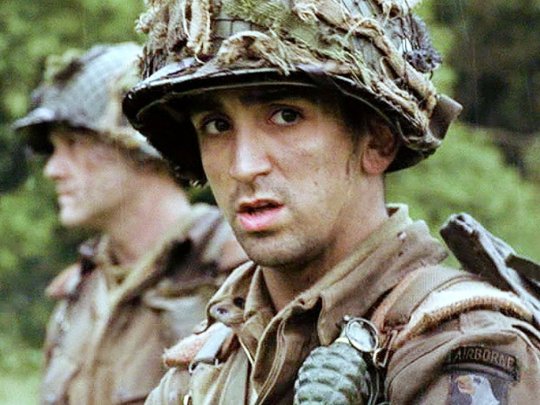
Actor James Madio played Easy Company T-4 Frank Perconte. Courtesy of HBO
Michael Cudlitz remembers the moment clearly. He was standing on a dike in Europe while filming episode five of “Band of Brothers,” the epic 2001 HBO miniseries about American soldiers fighting in World War II. With blaring lights and cameras rolling in the background, he fired furiously at the actors playing German soldiers.
Cudlitz fumbled as he pressed a new clip into his M1 Garand rifle, then brought the weapon back to his shoulder. Shooting blanks, he took aim at a soldier dressed in a Wehrmacht uniform and squeezed the trigger, watching the “enemy” fall to the ground.
“I call it my holy shit moment,” says the actor, who portrayed cigar-chomping staff sergeant Denver “Bull” Randleman. “There is the smell of cordite and sulfur in the air. For a second, you feel like you caused that. There is something very visceral about it. We got the tiniest taste of what these guys might have gone through.”
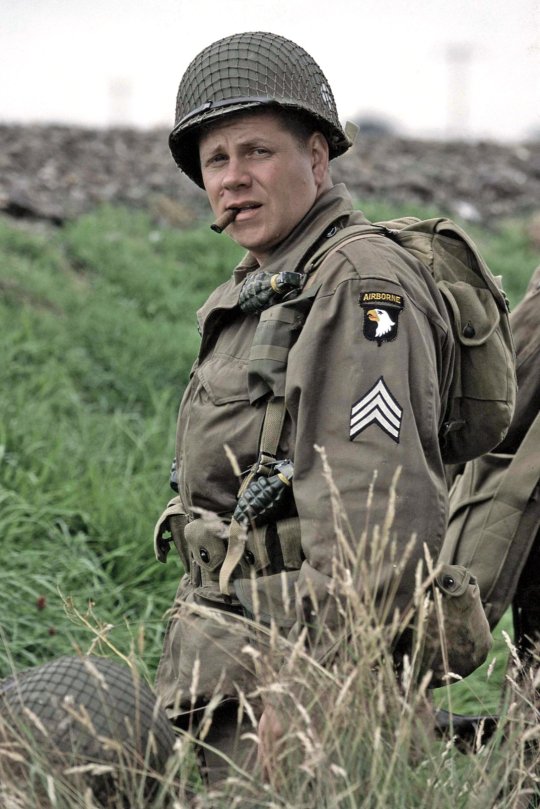
Michael Cudlitz as Staff Sergeant Denver “Bull” Randleman
Courtesy of HBO
“Band of Brothers” first aired 20 years ago, on September 9, 2001—two days before the 9/11 attacks shook the country. The Emmy Award–winning production offered viewers a gritty look at the lives of soldiers on the front lines of World War II’s European theater, realistically showing what the men experienced in combat and how they put their lives on the line for their beliefs.
Produced by Tom Hanks and Steven Spielberg, the miniseries is based on historian Stephen Ambrose’s bestselling 1992 book of the same name. Both follow the real-life experiences of Easy Company, part of the 506th Parachute Regiment of the 101st Airborne Division, from basic training through the end of the war in Europe.
James Madio, who costarred in the ten-part miniseries as T-4 Frank Perconte, says that “Band of Brothers” changed him and all those who watched it. He went from a World War II “illiterate” to an active supporter of veteran causes.
“When you look back and think of the bravery and camaraderie and the sacrifice of that generation and how unified America was because we were attacked, the story continues to gain strength as it goes,” says Madio, who has also appeared in Jersey Boys and Basketball Diaries. “To some degree, we wish we could go back to that American way.”
youtube
Two days after the series’ premiere, the United States suffered the most significant attack on American soil since Pearl Harbor. Peter Crean, a retired Army colonel who served in both the 101st Airborne and 82nd Airborne, remembers 9/11 well. Just after learning of the attack, the then–35-year-old soldier wrote a portent passage in his Palm Pilot: “My generation just had its Pearl Harbor. We are at war with people we don’t even know.”
“Just like the real ‘Band of Brothers,’ we were in a war we didn’t ask for,” says Crean, who lost two friends at the Pentagon on 9/11 and now serves as vice president of education and access at the National World War II Museum in New Orleans. “They were civilian soldiers who defended their country after it was attacked. The book and series showed us that we had been here before and we would get through this.”
From the beginning of the project, the actors understood they were participating in something special. Hanks and Spielberg, who had filmed the equally realistic, albeit fictionalized, Saving Private Ryan three years prior, spared no expense in making the miniseries as accurate as possible. Uniforms, weapons, scenery—everything was exact to the tiniest detail. With a budget of $125 million, “Band of Brothers” was then the most expensive production of its kind.

Band of Brothers
Stephen E. Ambrose’s classic bestseller and the inspiration for the acclaimed HBO series about Easy Company, the ordinary men who became the World War II’s most extraordinary soldiers at the frontlines of the war’s most critical moments
Buy
Easy Company’s 140 paratroopers were dropped behind German lines on D-Day, June 6, 1944. They could only hope that the amphibious landings at Normandy would succeed, giving them the chance to survive what could have easily been a suicidal mission.
The unit managed to successfully link up with American soldiers advancing from the Omaha beachhead. Under the command of legendary Army officer Richard Winters, Easy Company went on to participate in the liberation of France, the attempted liberation of Holland in the botched Operation Market Garden, the defense of Bastogne during the Battle of the Bulge, the liberation of concentration camps, and the capture of the Eagle’s Nest—Hitler’s hideaway in the Bavarian Alps.
Each episode in the HBO series began with interviews featuring the real-life soldiers. (As a segregated unit, all of Easy Company’s paratroopers—and the actors who later portrayed them—were white, with Irish, Italian, Jewish or German American heritage, among other European backgrounds.) Then in their 70s and 80s, the men discussed their experiences and offered insights on how the horror of being in battle affected them. Today, most—if not all—of the original members of Easy Company are deceased.
Both Madio and Cudlitz formed close bonds with the real soldiers they played. Like the rest of the cast, they spent time with the men and their families, learning about who they were in order to develop their characters.
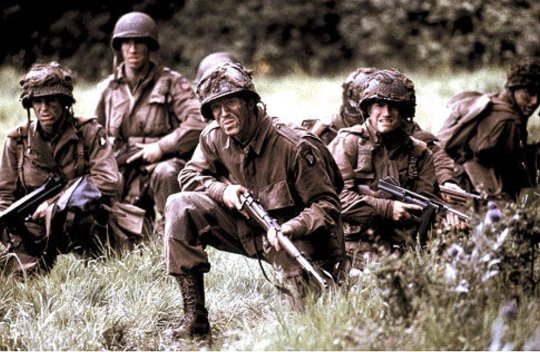
Damian Lewis (center, kneeling) played Easy Company’s leader, Dick Winters.
Courtesy of HBO
“I must have stared at my phone for 45 minutes before I called [Randleman] for the first time,” Cudlitz, who is also known for his roles in “The Walking Dead” and Grosse Point Blank, recalls. “I kept going over in my head how I was going to start this conversation. And the more I did that, the stupider it sounded. I wanted to get it right. I mean, that was the point behind the whole project: We wanted to get everything right.”
Madio, who was only 26 when filming began, says he knew nothing about World War II, let alone the Normandy invasion, before winning the role. He was a quick study, though, and became extremely close to Perconte—so close, in fact, that Perconte asked the actor to attend a reunion with him and other veterans in Europe after the show wrapped.
“Frank had just lost his wife, and his son couldn’t go on the tour,” Madio says. “He asked me if I would go with him. I spent two weeks with Frank and the other vets as we went around Normandy, Holland and Germany. It was amazing.”
The miniseries experience left most of the actors feeling like they were indeed a band of brothers. (The phrase refers to a passage from William Shakespeare’s Henry V: “From this day to the ending of the world, / But we in it shall be remember’d; / We few, we happy few, we band of brothers.”) Before production began, the group attended a “mini bootcamp” where they trained, drilled and learned how to be World War II soldiers. Filming, combined with getting to know the men they were portraying, left the actors with an intense feeling of solidarity.
“We get together once a year at my place in Los Angeles,” Cudlitz says. “Whoever is in town shows up.”
He adds, “We’ve also bonded with the [veterans’] families. We told the stories of their fathers, grandfathers and great grandfathers with respect, reverence and love.”
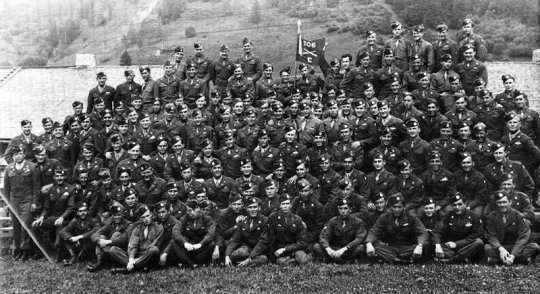
The men of Easy Company pose in Austria after the end of the war in 1945.
Nat1939 via Wikimedia Commons under CC BY-SA 4.0
“Band of Brothers” was a life-changing experience for Madio. He came away with a deep admiration for the Greatest Generation and its sacrifices, and he continued to wear the dog tags he’d received during production for two years after the show ended. Today, Madio volunteers with the United Service Organizations (USO) to entertain American troops in faraway places.
“It changed me as a young man,” he says. “I was this kid from the Bronx with no education on World War II. I went to Europe for a year and got to meet these guys who fought there. It taught me respect and understanding for what they did. It shaped me into the man I am today.”
Madio and Cudlitz regularly participate in “Band of Brothers” symposiums sponsored by the National World War II Museum. Both plan to be a part of the museum’s 20th anniversary program, which is scheduled for January 8, 2022, in New Orleans. The symposium will be livestreamed for virtual audiences free of charge.
Twenty years later, “Band of Brothers” continues to resonate with audiences. The message of sacrifice for a cause greater than the individual—along with the realistic portrayal of the average American at war—reminds viewers of how the country can coalesce into a formidable force when it needs to.
“‘Band of Brothers’ is important because it shows ordinary people doing extraordinary things,” Crean says. “These were citizen soldiers. None of these men planned to be in the military. They answered the call when their country needed them.”
American History
Based on a True Story
Books
Military
Nazis
Television
US Military
Warfare
World War II
#History
#09-2021 Science News#2021 Science News#acts of science#Earth Environment#earth science#Environment and Nature#Nature Science#News Science Spies#Our Nature#planetary science#Science#Science Channel#science documentary#Science News#Science Spies#Science Spies News#Space Physics & Nature#Space Science#History
1 note
·
View note
Text
Best New Horror Movies on Netflix: Winter 2018
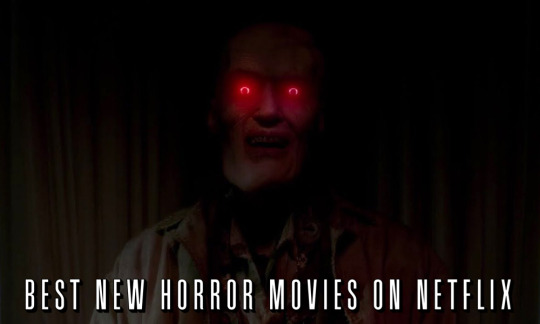
There's an overwhelming amount of horror movies to sift through on Netflix, so I've decided to take out some of the legwork by compiling a list of the season’s best new genre titles available on Netflix’s instant streaming service.
Please feel free to leave a comment with any I may have missed and share your thoughts on any of the films you watch. You can also peruse past installments of Best New Horror Moves on Netflix for more suggestions.
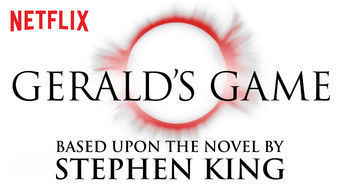
1. Gerald's Game
IT was undoubtedly the most entertaining Stephen King adaptation in recent memory, but Gerald's Game may be the most tense. The novel - which revolves around a middle-aged married couple's attempt to spice up their love life - was seemingly un-filmable, but director Mike Flanagan (Oculus, Ouija: Origin of Evil) takes a creative yet logical approach to successfully translate the story from the page to the screen. The direction is stylish, despite largely involving only two actors in a single bedroom. Carla Gugino (Watchmen) and Bruce Greenwood (Star Trek) star, both delivering brilliant performances, with Henry Thomas (E.T. the Extra-Terrestrial) and Carel Struycken (The Addams Family) in chilling supporting roles. Its left-field epilogue won't work for some, but the film remains a suspenseful, dead-filled experience that includes perhaps the most cringe-inducing sequence of the year.
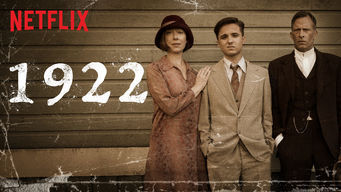
2. 1922
1922 is an adaptation of a little-known Stephen King novella, published in his 2010 collection, Full Dark, No Stars. Like much of King's work, it doesn't shy away from the supernatural, yet it's firmly grounded in reality. The always-reliable Thomas Jane delivers a transformative performance in his third King film (following Dreamcatcher and The Mist). He stars as Wilfred James, a conflicted man who confesses to murdering his wife (Molly Parker. Deadwood) with the aid of his son (Dylan Schmid, Once Upon a Time) in 1922. Akin to Edgar Allan Poe's "The Tell-Tale Heart," Wilfred's unbearable guilt manifests itself. Cinematographer Ben Richardson (The Fault in Our Stars) utilizes a lot of natural light, while Faith No More's Mike Patton composes an atonal score. Writer-director Zak Hilditch (whose previous film, These Final Hours, is also worth seeking out) delivers a brooding, character-driven slow burner.

3. Raw
Raw made waves on the festival circuit when it caused multiple viewers to faint. It is indeed a uniquely repulsive film in more ways than one might expect - depicting everything from animal dissecting to bikini waxing to eye licking in graphic detail - but it's much more than a mindless gorefest. The French film is a compelling, darkly humorous coming-of-age story... with cannibalism. The plot revolves around Justine (Garance Marillier), a young vegetarian, as she enters her first semester at veterinary school. She receives the full college experience: hazing, coed living, experimentation, partying, flesh eating. Marillier's fearless performance is matched by a strong vision from writer-director Julia Ducournau.
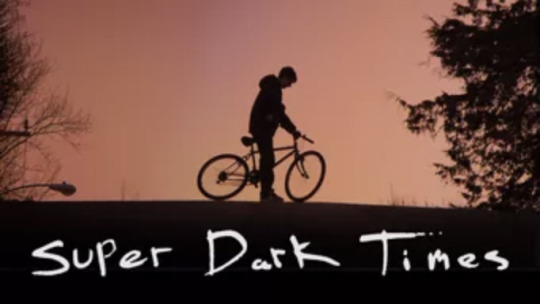
4. Super Dark Times
From the first act of Super Dark Times, you might expect it to be a coming-of-age genre tale in the vein of Stranger Things and IT, but by the end you will find a film that shares more in common with River's Edge and Stand By Me. It's set in the '90s, complete with scrambled "adult" channels, but it doesn't beat the viewer over the head with nostalgia. Owen Campbell (The Americans) and Charlie Tahan (Ozark) star as best friends with a secret that drives a wedge between them. Co-writers Ben Collins and Luke Piotrowski (Siren) capture the adolescent banter better than most films, while director Kevin Phillips makes an impressive feature debut. Living up to its title, Super Dark Times is a dark, tense experience.
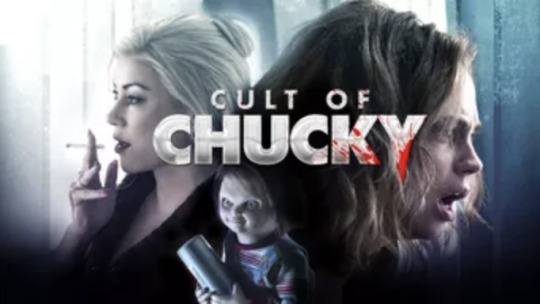
5. Cult of Chucky
Child’s Play is a rare horror franchise that has maintained its original continuity, thanks to having Don Mancini - who has written every installment and directed the latter three - as the driving creative force. Cult of Chucky, the seventh entry in the series, brings together the franchise’s three distinct story lines - Nica (Fiona Dourif) from Curse of Chucky, Andy Barclay (Alex Vincent) from Child’s Play 1-3, and Tiffany (Jennifer Tilly) from Bride/Seed of Chucky. Taking cues from A Nightmare on Elm Street 3: Dream Warrior, the film takes place in a mental institution, where Nica bonds with the members of her therapy group. When they start dying one by one, Nica struggles to convince anyone that a possessed doll named Chucky (voiced, as always, by Brad Dourif) is responsible. Mancini’s well-paced script is fearless in its exploration of delightfully weird ideas, in addition to balancing the more serious tone with lighthearted fun. The result is as close as you can get to pleasing fans of all eras of Chucky. Read my full review of the film here.
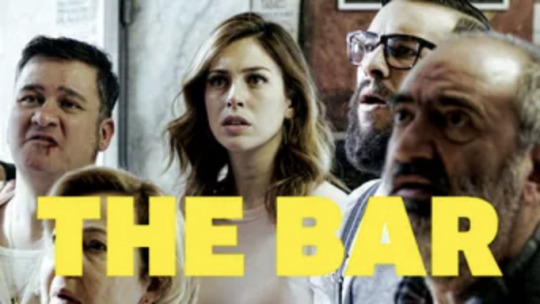
6. The Bar
The Bar is the latest effort from reliable Spanish filmmaker Álex de la Iglesia (The Oxford Murders). It finds a group of strangers trapped in a seedy bar in downtown Madrid. Anyone that tries to leave is killed by an unseen assailant, with their bodies disappearing - blood and all - when no one is looking. Reminiscent of an episode of The Twilight Zone, suspicion grows and intrigue builds as the group must come together to solve the mystery. Iglesia does a fine job establishing an ensemble of quirky characters in a short time and then maintaining that momentum throughout the duration. He also injects his signature dark humor into the plot, helping to further set it apart from other contained thrillers.

7. Creep 2
2014's Creep (which is also streaming on Netflix and should be viewed first) was perhaps the last good, original found footage movie, made on a shoestring budget with copious improvisation. Star/co-writer Mark Duplass (Safety Not Guaranteed), whose eerie performance as an idiosyncratic murderer anchored Creep, and director/co-writer Patrick Brice return for Creep 2, which slightly expands the mythology without sacrificing the intimacy that made the first film so effective. Duplass' character now goes by Aaron, assuming not only the name of Brice's character from the first Creep but also his interest in filmmaking. Sara (Desiree Akhavan) responds to Aaron's Craigslist ad looking for a videographer, and it’s not long after their meeting that he admits to being a serial killer. But Aaron is going through a bit of a midlife crisis, so he employs Sara to film a documentary about him. Much like the first Creep, not a whole lot happens before the climax, but Duplass' eccentric character and vulnerable performance keep you watching with bated breath.

8. Killing Ground
Killing Ground is an unapologetic Australian thriller in the vein of Eden Lake, Wolf Creek, Deliverance, and The Hills Have Eyes. In other words, it's an intense punch in the gut. In the film, a couple's romantic camping trip is interrupted by unhinged locals against whom they must fight for survival. The familiar set-up is elevated by intriguing flashbacks to events a few days prior to the main story, the context of which adds even more weight to the harrowing situation. Although not the most original story ever told, Killing Ground is an effective, realistic debut for writer-director Damien Power.

9. Veronica
Verónica is a Spanish-language psychological thriller from Mexico. Co-directors Carlos Algara and Alejandro Martinez-Beltran opted to shoot the film in black and white with gorgeous, precise cinematography, bringing to mind the recent The Eyes of My Mother. A psychologist (Arcelia Ramírez) is offered a substantial sum of money to take on the evasive yet intelligent Veronica de la Serna (Olga Segura) as a patient. It's a simple set-up, consisting of little more than dialogue between the two characters, but the intriguing therapy sessions slowly reveal Veronica's deep-seated issues. The plot takes an unexpected, exciting turn for the final act, but it ultimately leads to a twist that is trite and, frankly, unnecessary. But don't let that deter you; the rest of the film is positively riveting.
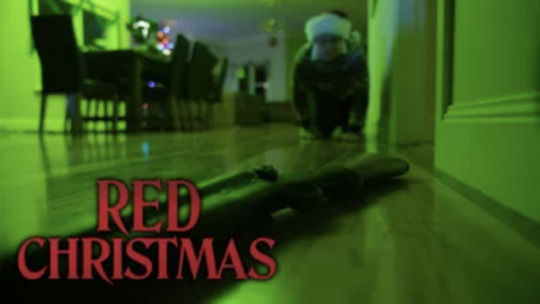
10. Red Christmas
Red Christmas is a holiday horror film that - despite hailing from Australia - captures the typical Christmas season quite well, complete with the family drama it often entails. It also addresses the topical subject of reproductive rights, employs both a genre legend (E.T. the Extra-Terrestrial's Dee Wallace, in one of her strongest performances in years) and an actor with Down syndrome (Gerard O'dwyer), and tells a decent horror story in the process. Similar to You're Next, the film features a killer interrupting a strained family gathering, blending home invasion and slasher influences. It won’t replace any of the classics, but Red Christmas is a fine addition to the Christmas horror pantheon. Read my full review of the film here.
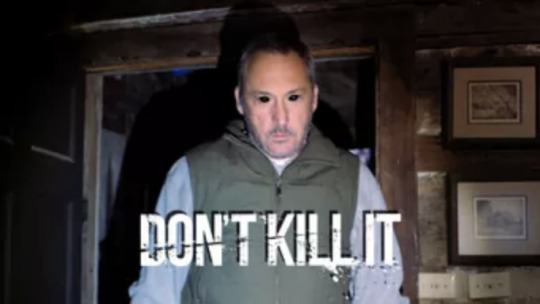
11. Don't Kill It
Don't Kill It is a fun amalgam of horror, action, comedy, and western from director Mike Mendez (Big Ass Spider). A rash of homicides - in which each killer murders the previous killer - lead FBI agent Evelyn Pierce (Kristina Klebe, Halloween) back to the podunk Mississippi town she once called home in order to investigate the case. She reluctantly teams with Jebediah Woodley (Dolph Lundgren, Rocky IV), a self-described demon hunter, to stop the body-hopping demon on the loose. There are a couple of big, bloody set pieces that make the abundance of exposition worthwhile. Clocking in at a lean 83 minutes, the film plays like a more charming and entertaining version of a Syfy original movie.
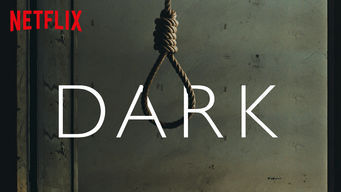
Bonus: Dark
Comparisons between Dark and Stranger Things are inevitable - both Netflix original series concern a mystery of a missing child in a small town in which supernatural elements are at play - but Dark approaches the material in am much more subtle, subversive manner. In addition to Stranger Things' coming-of-age through a genre lens, the German show has the mind-bending rhetoric of Donnie Darko and the mystique of Twin Peaks, with a touch of Back to the Future for good measure. There may be a few too many characters for its own good, but the story - in which a disappearance in the present is somehow tied to similar events that occurred in 1986 - is undeniably well told and well shot. I'm already eager to binge a second season.
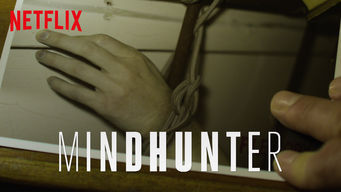
Bonus: Mindhunter
Mindhunter is an original series from executive producer David Fincher (Gone Girl, Seven), who also directs several episodes, with Joe Penhall (The Road) serving as showrunner. Based on the true crime book Mind Hunter: Inside the FBI’s Elite Serial Crime Unit, it follows FBI agents Holden Ford (Jonathan Groff. Glee) and Bill Tench (Holt McCallany, Alien 3) as they conduct interviews with convicted murderers in the late '70s for their groundbreaking work in behavioral science. After an attention-grabbing opening scene, the show takes a couple of episodes to gain momentum, but it's virtually impossible to look away after that. There's an abundance of heady dialogue, in typical Fincher fashion, though it's never short of enthralling.
#netflix#gerald's game#creep 2#super dark times#cult of chucky#mindhunter#1922#best of netflix#article#list
97 notes
·
View notes
Text
Hyperallergic: A Film About Falling in Love and Geeking Out About Modernism
Still from Columbus (all images courtesy Columbus)
Ten years ago, I helped organize a panel in conjunction with the Asian American International Film Festival called “On Asian/American Aesthetics.” The featured speakers included playwright David Henry Hwang, fashion designer Mary Ping, architect Billie Tsien, and filmmaker Wayne Wang. The prompt—“What are Asian or Asian American aesthetics?”—provided an interesting entry point for a discussion about art, as well as identity and race. But in many ways, the question also felt impossible to answer and seemed almost facetiously posed, because first one had to unpack what is considered Asian and what is considered Asian American. And were we primarily talking about an East Asian aesthetic, as reflected by the ethnicities of the panelists?
Video essayist turned narrative filmmaker Kogonada offers a surprisingly elegant response to this question in his debut feature. Visually arresting and replete with contemplative moments, Columbus spotlights the eponymous Indiana town, notable for being the birthplace of Mike Pence and an unexpected haven for modernist architecture. Deborah Berke, I.M. Pei, and Eero Saarinen have all left their mark there. The Korean-born and Midwest-grown director uses this spectacular backdrop to cultivate the fateful friendship forged by circumstance and isolation between a small-town girl and a transient outsider that’s at the heart of the movie.
Still from Columbus
Aesthetics play a central role in their relationship, as the younger Casey (Haley Lu Richardson) and the older Jin (John Cho) initially bond over a fascination with the town’s unique landscape. Having foregone college, Casey doesn’t yet have the formal knowledge to fully express the reason why certain buildings affect her. When Jin asks why she likes Saarinen’s all-glass-façade bank, she repeats the same diligently memorized facts that we overheard a tour guide say earlier in the film. Jin, on the other hand, is the son of a famous architectural scholar, who was due to give a lecture before suddenly falling ill, thereby providing the impetus for Jin’s visit. Father and son’s estrangement has consequently left Jin feeling cold about his father’s work. Gazing upon the hospital walkway, which is built over a stream shaded by plants and trees, Jin easily summarizes the philosophy of James Stewart Polshek: that architecture can “heal,” but he admits that he doesn’t know whether he personally believes in it. He possesses the ability to intellectualize his father’s passion, but unlike Casey, he is not moved emotionally by it.
All this geeking out about a topic like modernism could be potentially distancing for viewers if it wasn’t for Casey’s earnestness. By embodying that youthful spirit of first love—whether it’s a love of art or literature or music—her character allows non–architecture nerds to be able to relate. For Kogonada, a grad school dropout who made the switch from academic criticism to creating film, which is the thing that he clearly loves, his intention isn’t necessarily to teach but to help us appreciate the world through Casey’s eyes. Painter Paul Klee said, “Art does not reproduce the visible but makes visible.” Exquisitely rendered by cinematographer Elisha Christian, the otherwise quotidian structures of banks, libraries, and hospitals all become seen.
Still from Columbus
Still from Columbus
One of Kogonada’s video essays, which preceded the screening, provides an additional primer for how the audience should watch Columbus. Splicing together shots from early-20th-century Japanese filmmaker Yasujiro Ozu’s many works, the short highlights patterns and tropes, beginning with domestic scenes of food being prepared in the home. We later see these tableaux echoed in Kogonada’s feature, such as when Casey sits or stands in her kitchen chopping and peeling vegetables. (There’s another perfectly Ozu-esque moment at the end of the film that I won’t spoil, but you’ll know it when you see it.) Kogonada continues to pay homage to Ozu’s techniques through his frequent use of “pillow shots,” which were favored by his predecessor as a way to gently bring viewers into a new setting.
The film also plays with visibility when it comes to presenting people. The first time we see Jin’s father, his back is turned to the camera. Similarly, we’re introduced to Jin the way Casey first sees him: in the dead of night, from a distance, his face partially obscured. Even as we follow Jin from the hospital to his father’s room at the local inn where he’s staying, his figure remains shrouded in shadow. In the daylight, he frequently throws on sunglasses while sporting a dark tailored suit. I couldn’t help but interpret his inscrutability as an inherently Asian quality, or rather as something projected onto Asian people by Westerners, who often stereotype us as enigmatic and strange. Jin doesn’t necessarily struggle with his hybrid identity, but he does bristle at the external pressures (namely overworking and overly dramatic grieving) placed on him by his Korean culture. At the same time, as an Asian American character working abroad in Seoul, Jin remains very much a foreigner in the mostly white suburb. Indeed, a shopkeeper’s eyes linger just a little bit too long on this unfamiliar man wandering into his store.
Still from Columbus
Still from Columbus
Yet Jin’s aloofness has implications on a psychological level, as well. Perhaps others find him difficult to read precisely because he has deliberately blocked off a part of himself. It isn’t until Casey presses him about his father that he begins to emote, and suddenly that pain of opening up becomes achingly perceptible on his face. This disconnect between surface appearances and what lies beneath speaks to a larger question about aesthetics and humanity. For architects chasing the concept of modernity, many sought to find “modernism with a soul,” as Jin puts it. In an interview with IndieWire, Kogonada notes how modernist architecture, with its boxy shapes and empty spaces, “can feel very alienating and very cold.” In this respect, Jin’s journey to emotionally connect with Casey, and with his father, comes to represent the quest of modernism itself. Like those space-age façades that can seem out of place in the suburban sprawl of Columbus, Jin cuts a similarly peculiar yet striking figure in the town.
While not overtly acknowledged in the film, Western modernism does borrow heavily from Asian culture, which Kogonada has also previously discussed. Under his direction, this intermingling of ideas and styles coalesces in Columbus. At one point in the movie, Casey describes her cooking as “subtle,” and says that by using less salt, one can better taste the food. Such restraint can also be used to explain Kogonada’s work. While he may not have set out to define an Asian American aesthetic, his synthesis of art criticism, filmmaking, and storytelling presents us with one of the clearest examples I’ve seen to date.
Still from Columbus
Columbus is playing at IFC Center (323 Sixth Avenue, Greenwich Village, Manhattan) and other theaters nationwide.
The post A Film About Falling in Love and Geeking Out About Modernism appeared first on Hyperallergic.
from Hyperallergic http://ift.tt/2voQCcP via IFTTT
0 notes